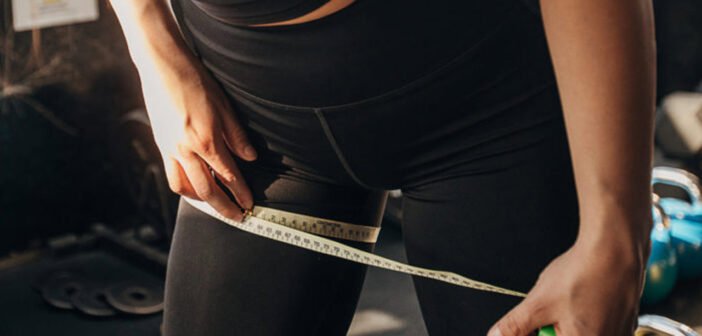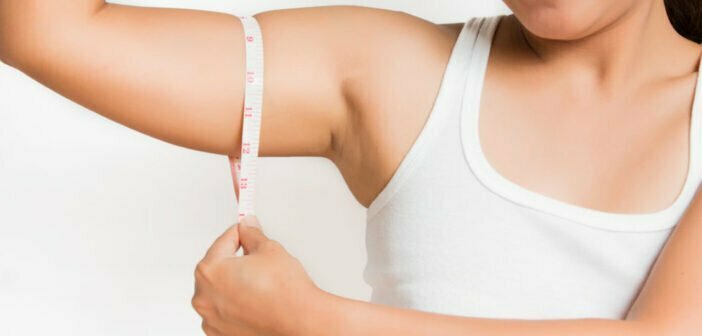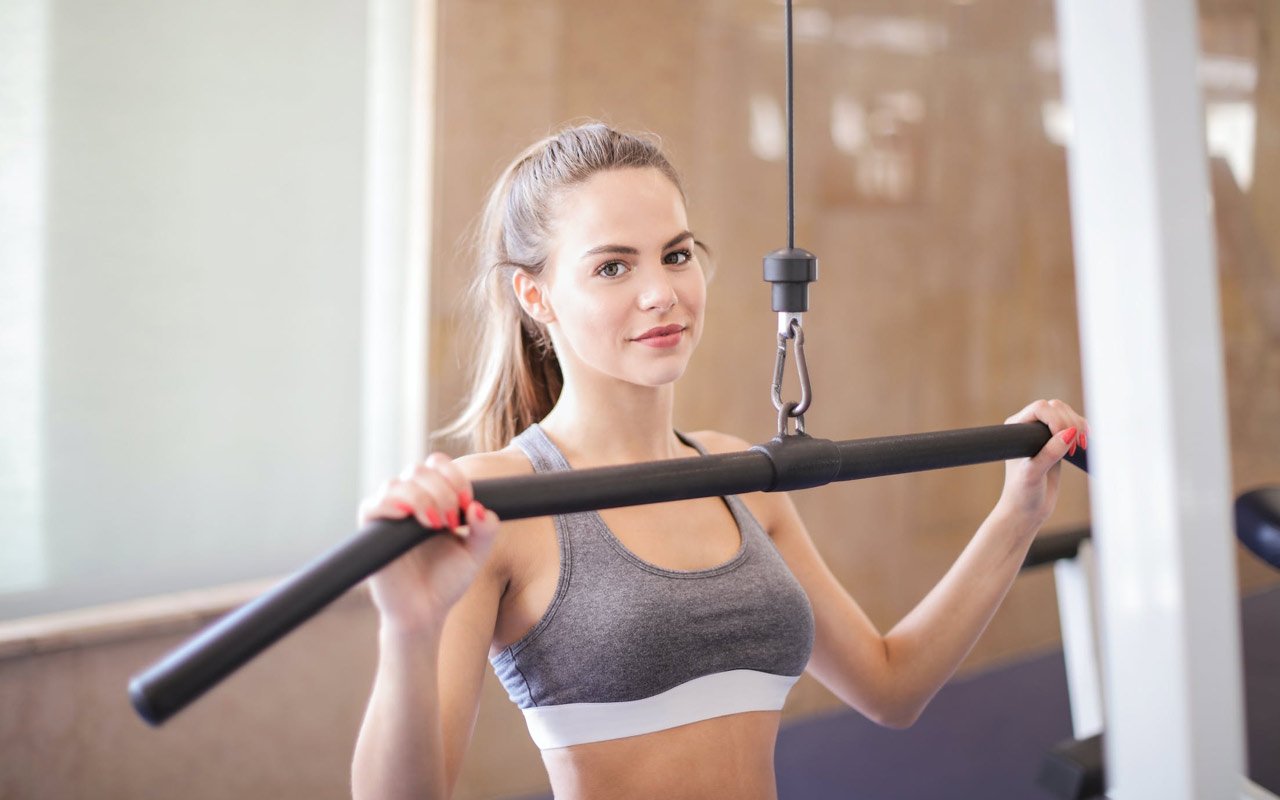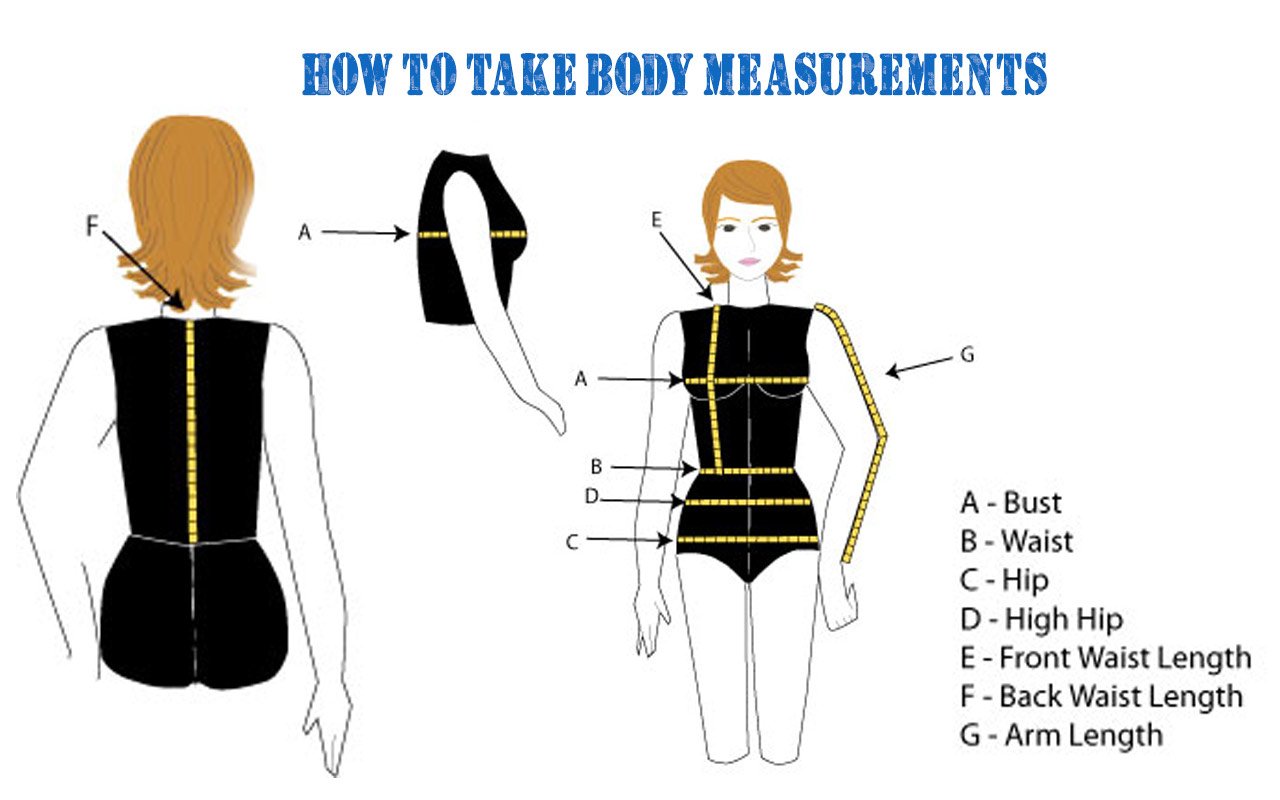Most people jump on the scale to track their weight loss. Your weight and even your BMI don’t tell the whole story.
A good fat loss program will include optimal amounts of protein, which can lead to an increase in muscle mass, especially when combined with exercise and nutrition.
Because muscle weighs more than fat and is denser, it is not surprising that our bodies are changing.
However, we may not see a decrease in the number of the scale as fast as we would like. It is equally important to learn how to measure your body to track your weight loss.
Table of Contents
Normal Body Measurements
Many people wonder if their measurements are appropriate for their weight and height.
This is the short answer: Regardless of your measurements, they are normal. You’ll see that everyone is different in terms of body size and shape. Knowing the body types can help you understand where extra fat is stored.
We, women, tend to choose body shapes.
- Apple – An apple-shaped person is taller and has narrower hips.
- Straight- or rectangular: There is little variation in the measurements of chest, waist, hips, and hips.
- Pear – This person’s hips are bigger than their chest.
- Hourglass: This shape has a similar hip and chest, but a narrower waist.
Many women wonder what the “normal” shoulder width looks like. As with all measurements, your shoulder width is normal for you. However, it may not be for someone else.
The average shoulder width for women is 17 inches. This is the distance from your armpits to your back. Remember that the hip line for women is typically the largest part of the body. The shoulder line for men is the widest.
Men are generally divided into body types, rather than shapes. These body types do not describe the body in a scientific way, but rather describe common characteristics. There are many body types, and you may fall within more than one.
- Ectomorph – People with this body type are often lean and may have difficulty gaining weight because of a faster metabolism.
- Endomorph – This body type has higher body fat, large bones, and slower metabolism making it difficult to lose weight.
- Mesomorph: This type is stronger and can help you lose fat and gain muscle.
The majority of us fall somewhere along this continuum. But what does this information tell you?
Your body’s shape and type will help you determine where excess fat is stored. If you are struggling to lose weight in stubborn areas, understanding your body will help you feel less frustrated.
You’re on the right path as long as you are losing fat somewhere.
Take body measurements for weight loss
You can measure your body to ensure you are losing fat evenly across all parts of your body. Here are some places to measure various body parts.
- Abs – Stand straight with your feet together, your torso straight, but relaxed. Locate the widest part, usually around your belly button.
- Arms – Stand straight and keep one arm extended. Find the midpoint of the shoulder bone and elbow for that arm.
- Calves Measure halfway between your knee and your ankle.
- Chest – Stand with your feet together, torso straight, and your legs straight. Find the area around your bust.
- Hips – This is the largest part of your glutes. Standing sideways, look in the mirror. Keep the tape parallel to the ground.
- Thighs – Look for the middle point between the lower leg and the backside of your knee. Or, use the largest part of your thigh.
- Waist – Find your natural waistline or narrowest part.
Make sure you are wearing only thin, fitted clothing. It is important to avoid wearing clothing that is different in thickness each time you measure, as it can cause a skew in the measurements.
Keep a record of the measurements made at these sites using a tape measure. It is often easier to keep track of these sites in the notes section on your phone.
How to Measure Yourself
Use a flexible, elastic tape measure. You can use a cloth measuring tape or a body tape such as the MyoTape Body Tape Meter.
Take your measurements twice to ensure accuracy. To get your final numbers, take the average of both measurements.
You don’t have to lose weight if you lose inches. This is a great sign that you are losing fat and gaining muscles.
To measure all dimensions, hold the tape measure on the skin so it touches the skin but does not compress the skin.
To see if your fat loss is occurring, you can keep track of your measurements using this progress chart once every four weeks.
Bust/Chest
The tape measure should be in line with your nipple. Measure the distance from the ribcage to the side, under the arm.
Waist

The tape measure should be aligned with your tummy button. Make sure it is level all the way. It is usually easiest to measure along the side of your body.
It is important to remember that the waist measurement can be the most inaccurate due to bloating.
Many times, women’s measurements won’t be accurate at the time of their period.
Did you know: Waist Beads have been a tool to track weight loss or weight gain of African women for a long time.
Hips

This would be more accurate if it was called the “bum measurement”. This is the measurement of your widest point. Make sure that the tape measure is at your hips.
Thigh

Measure towards the highest point of your leg. You should measure the same leg every time, as different sizes can affect your legs.
Arm

Measure 15cm from the tip of your elbow to the top of your arm. This is the measurement. Take the measurement as with your thighs.
How body measurements change over time
Body Composition
People want to see the fat disappear in certain areas but not in others when they begin a weight loss plan.
We can’t control where the fat goes. Unfortunately, we can’t choose where the fat goes. The areas where you have excess fat are easier to lose than the rest.
You can’t control the amount of fat you lose, but you can examine your body and those of your parents to get an idea of which areas you store more.
Although our genes hold us all hostage to some degree, you can make improvements to your body.
You can make changes to your body by implementing a complete exercise plan that includes cardio exercise at least three times per week, strength training for all muscle groups twice to three times per week, and a low-calorie diet.
You should follow the plan and give your body time for it to work. It may take several weeks or even months for results to show up so focus on other goals such as getting stronger or healthier.
Muscle vs. Fat
It is possible to lose inches without losing weight. Another reason the scale can be misleading is that it weighs everything and can’t tell what comes off and what goes.
Gaining muscle can cause you to lose inches, even though you are not losing weight.
This is normal if your strength training has been added to your workout or a new activity that stimulates your body’s ability to build lean muscle tissue.
Muscle is lighter than fat but takes up less space. This is a good sign that you have achieved your goal of building muscle.
This is why your measurements are more important than the scale. It’s body composition that tells the whole story and not your weight.
You can track your progress
If you’re trying to gain muscle or lose weight, it is a good idea to have measurements taken every two to four weeks to assess how your efforts are impacting your body composition. You should take measurements every other month if you want to keep your results.
Spot reduction – This is where you exercise to lose fat in a specific area of your body. Taking your measurements will help you see that fat is melting.
How to Measure Your Body for clothing Perfect Fit?
A great fit is achieved by accurately measuring your body. No matter if you make your block using a pattern that is sized or drawn from measurements, accurate measurements are crucial to the success and longevity of your block.
A well-fitting block is crucial to the success of all projects you create!
A tape measure is all you need! It’s best to have someone else measure your measurements.
However, you can do it yourself. Simply stand in front of a mirror to ensure that the tape is in the correct position.
In order to be accurate, you should only wear your undergarments. A leotard, or similar close-fitting garment, will work well. Don’t wear jeans, sweats, or any bulky clothing.
It can be difficult to determine how tight you should pull the tape around your body because it is soft tissue.
The tape should be snug but not too tight. It should not dig in or create an indentation.
You should not let it loosen. Wrap the tape around the measurement area and keep it in place. The tape should be visible from the area being measured.
![]()
A – Bust: Measure the bust to the maximum point. Measure the circumference of your body (total circumference).
B – Waist Measurement: The waist is the area where the body bends. To measure the exact area, it helps to bend from side to side. To mark the exact location, you can wrap an elastic band around your waist.
C – Hips: Measure your hips to the fullest point, usually around your seat.
D – High Hip Measurement: Take a measurement around your fullest part, approximately 3-4 inches below your waist. This measurement is useful when fitting slim pants or skirts (to determine the shape of your hips or belly).
E – Front Waist Measurement: Measure from the shoulder to the bottom of your bust, and then measure down to the waist.
F – Back Waist Measurement: Measure from the base (not the side) to the middle of the waistline.
G – Arm: Length Measure from the top (find the bone on the shoulder/top arm) to your wrist (find bone at the side or wrist). WITH THE ELBOW BENT to allow movement in sleeve making, it is important that the elbow be bent.
It’s easy and doesn’t require a lot of measurements. For skirt length, you could measure from the waist down to the knee or ankle.
However, I prefer to just put the garment on to determine where the hem should be.
It’s now time to make your fit pattern (you will get the correct size by using your body measurements! Or, you can draw a block using your own measurements.
Next, sew it up and get to work fitting! Make sure to have all the tools that you will need. They are not many, and you can start for $25 (plus free shipping from Amazon).
If you decide to use a body form for future fittings, make sure it fits your measurements and your SHAPE.
Take Body Measurements For Fitness

You can either buy a cheap tape measure at a craft shop or one of these self-help tape measures. You should always measure under the same conditions every time.
You should also measure in the same place each week. It sounds strange, but I use freckles to mark my arms and legs so that I can easily determine where I need to measure each week.
Measure the circumference at each spot and record it:
- Neck (For most people, this is what connects your body and your head).
- Shoulders (both arms at your side, at the widest point between shoulder and shoulder).
- Chest (lift your arms and wrap the tape measure around your chest just above your nipple. Then lower your arms.
- Bicep (either right or left, but be consistent).
- Waist (at your belly button to ensure consistency).
- Hips (measure your widest hip).
- Thigh (left, right, or the same spot each week).
Frequently Asked Questions
What is the difference between body measurements for men and women?
There are some differences in the numbers. Men tend to be wider at their chests than women, while women are wider at their hips. And men tend to store fat in their abdomen while women store it in their hips and thighs.
However, in general, both men and women measure their bodies in the same places.

